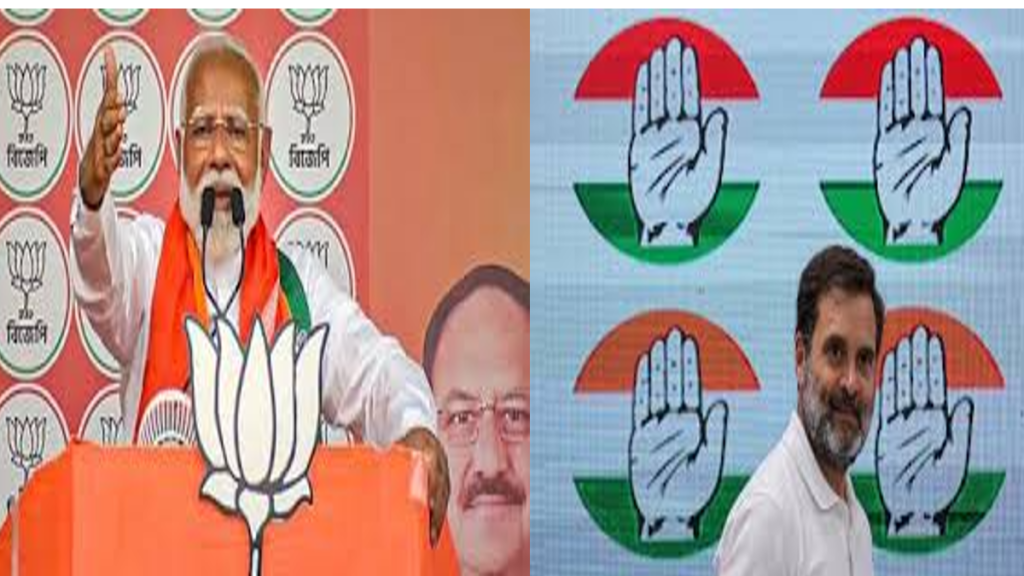The countdown to Lok Sabha Election results on June 4 has begun as the 7-phase General Elections get set for the last phase of polling on June 1. While the country prepares for a new Government, let’s find out how the key political parties are poised to lead the country based on their manifestos. Most key brokerages globally have revised India’s growth outlook higher. Will the BJP/Congress manifesto lend a helping hand or will throw a spanner in the works?
What’s the cost for the economy?
Be it the Congress’ Nyay Patra or BJP’s ‘Modi Ki Guarantee’, there have been promises galore in this high decibel and much anticipated election campaign. But the question is what it all implies for the economy. Most economists are of the opinion that Congress’ freebies could be a stretch on fiscal prudence while policy continuity is what would be ideal in terms of maintaining growth momentum.
BJP bats for fiscal prudence Vs Congress’ bet on freebies
According to Garima Kapoor, Senior Vice President, Economist, Elara Securities, “BJP’s manifesto continues to focus on prudence over populism, macro economic stability, infrastructure and asset creation as means to growth. The welfare schemes mentioned in the manifesto are largely a continuity of the policies and programs the government has been running so far. We do not see any slippage in the budgeted fiscal deficit for FY25 due to the same.
“On the contrary, Congress manifesto includes many freebies and schemes which can increase the burden on exchequer like waiving farm loans, cash transfers of Rs 1 lakh per year under a proposed Mahalakshmi scheme, hike in MGNREGA wages, legal guarantee to MSP for crops among others. The total cost of implementing all the promises will ruin India’s fiscal health leaving no budget for capex. We estimate that the total cost of implementing the Congress manifesto may be Rs 10 -15 trillion- an addition of 3 to 4.5% of FY25 expected GDP.”
UBS says focus should be on policy continuity
In a report published some weeks ago, Tanvee Gupta Jain, UBS India Economist outlined three possible scenarios – a) a BJP single-party majority; b) a BJP-led coalition; and c) a weak coalition led by the INDIA alliance.
While maintaining that it does not predict the election outcome, UBS stated that “ In the first scenario, we think the focus would be on policy continuity, which could bode well for business sentiment and the much anticipated private corporate capex recovery. In addition, further progress in supply-side reforms could be seen, including the clean energy transition, higher infrastructure spending (both digital and physical), a manufacturing push and other targeted policy initiatives (towards the youth, poor, women and farmers).
“In the second scenario, reform momentum remains broadly similar, but some tough policies may not progress and/or are likely to be put on hold (including disinvestment, a land bill and a uniform civil code). However, comfort about fiscal discipline could be less of a concern for investors in this scenario.
“In the third scenario, the economic policy approach would be largely aligned, but markets could have concerns about fiscal discipline and a less decisive government, leading to lags in implementing supply-side reforms. There could also be a delay in the private corporate capex recovery due to weaker business confidence caused by the surprise political outcome.”
Has Congress or BJP fulfilled poll manifestos in previous terms (2004-2024)?
Though there are no legal obligation on political parties to comply with their manifesto, UBS analysis indicates that “Modi government was better in fulfilling their stated manifesto compared to Congress. The Modi government’s focus on balancing economic reforms with social welfare schemes for the bottom of the pyramid (including a potable water connection for every household, the state provision of housing support and medical insurance, the opening of bank accounts, free LPG connections and free food rations, among others) seems to have worked in their favour.”
Gupta in the report has added that, “Besides economic reforms, recent opinion polls suggest the government’s handling of Covid-19, building the Ram Temple and the revocation of Article 370 have helped bolster support. However, unemployment and inflation remain key concerns. Mixed rural recovery; women-centric policies on the rise.”

